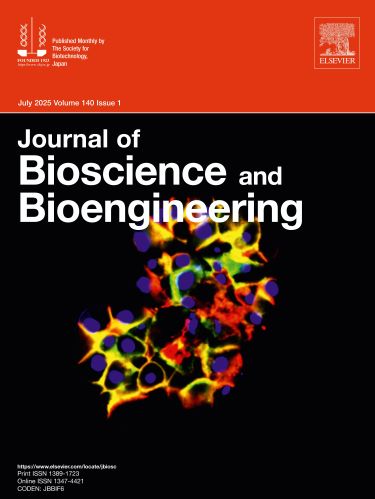Journal of Bioscience and Bioengineering Vol. 140 (2025)
Vol. 140 (July–December 2025)
Hepatocytes can be induced to express differentiated functions by forming multicellular spheroids. However, commercially available human iPSC-derived hepatocyte-like cells (HLCs) often lack sufficient intercellular adhesiveness immediately after thawing, making it difficult to form spheroids using conventional methods. We therefore applied a methylcellulose-based technique that utilizes the swelling force of the medium to enable spheroid formation even from weakly adhesive cells. As a result, stable spheroids could be generated from freshly thawed HLCs, leading to marked increases in the expression and metabolic activity of hepatic markers such as CYP3A4, which were otherwise low in two-dimensional cultures. Nevertheless, complete hepatic maturation was not achieved. As shown in this image, the majority of the cells co-expressed both E-cadherin (green) and N-cadherin (red). If a culture method could be developed to recapitulate the complementary expression pattern observed in mature liver—E-cadherin expression in the periportal region and N-cadherin in the pericentral region—the utility of these cells would be significantly enhanced.
For more information regarding this work, read the article: Fumiya Tao, Sanshiro Hanada, Kazuya Matsushima, Hiroshi Arakawa, Naoki Ishida, Yukio Kato, Saya Okimura, Tomohisa Watanabe, Nobuhiko Kojima, “Enhancement and maintenance of hepatic metabolic functions by controlling 3D aggregation of cryopreserved human iPS cell-derived hepatocyte-like cells”, J. Biosci. Bioeng., volume 135, issue 2, pages 134–142 (2023) (Copyright@2025 The Society for Biotechnology, Japan).
⇒JBBアーカイブ:Vol.107 (2009) ~最新号
⇒JBBアーカイブ:Vol. 93(2002)~Vol. 106(2008)
